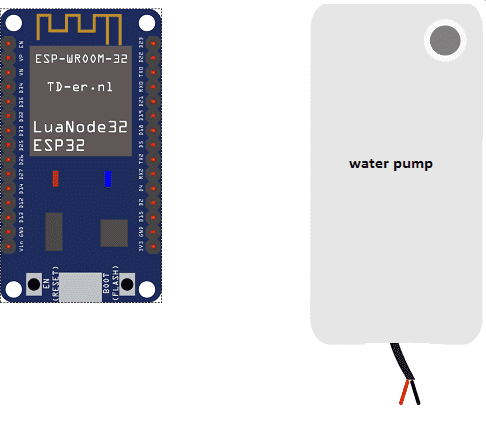

Controlling a water pump with an ESP32 card is similar to controlling it with an Arduino. The ESP32 is a microcontroller that can be used to control various components of a water pump system, such as the pump and valves, as well as to monitor the system and provide feedback to the user.
To control a water pump with an ESP32, you will need to connect the pump to the ESP32‘s digital output pins, and use a relay as a switch to control the power to the pump, as the ESP32 can’t provide enough current to drive the water pump directly. The relay can be controlled by the ESP32’s digital output pins.
You can use the ESP32‘s built-in GPIO (General Purpose Input Output) pins to control the relay and turn the pump on and off. You can also use a library like the ESP32-GPIO library to control the relay.
Once the connections are made, you can use the ESP32 to control the pump by sending commands to the relay to turn the pump on and off and also to control the flow rate and direction of the water using a library or a custom code.
It’s important to follow the pump’s datasheet and the manufacturer’s instructions when using a water pump with an ESP32 and also to ensure that the system is properly sealed and protected from water damage, and to keep in mind any safety concerns when working with water and electricity.
But de ce tutoriel:
In this tutorial, we will control a water pump by the ESP32 card:
-
If you press the button, you start the water pump to fill a bottle
-
If the button is released, the water pump stops
Necessary components
ESP32

An ESP32 card is a type of development board that is based on the ESP32 microcontroller. The ESP32 is a powerful, low-cost microcontroller with built-in WiFi and Bluetooth capabilities. It is commonly used for IoT projects, home automation, and other applications that require wireless connectivity.
An ESP32 card typically includes the ESP32 microcontroller, flash memory, a USB interface for programming and power, and various other components, such as voltage regulators, oscillators, and headers for connecting external devices.
The ESP32 card can be programmed using the Arduino IDE, which supports C and C++ programming languages and has a simple and user-friendly interface. There are also several libraries available for the ESP32, which provide additional functionality and ease of use.
ESP32 cards are available from various manufacturers, with different features and capabilities depending on the specific model. Some ESP32 cards include additional components such as a display, sensors, or a battery management system.
By using an ESP32 card, you can easily create wireless connected devices that can be controlled remotely, and the ESP32‘s low power consumption makes it ideal for battery-powered applications.
12V water pump
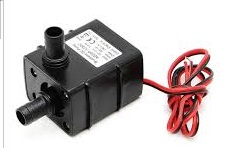
A 12V water pump is a type of pump that is designed to run on a 12-volt DC power supply. These types of pumps are commonly used in automotive, marine, and RV applications, as well as in small scale irrigation, water treatment, and other similar systems.
One of the advantages of using a 12V water pump is that it can be powered by a car battery or a deep-cycle battery, which makes it portable and convenient for use in remote locations. Additionally, these pumps are relatively low power and energy efficient, which makes them ideal for use in solar-powered systems.
To control a 12V water pump with an ESP32, you can use a relay to switch the pump on and off. The relay can be controlled by the ESP32‘s digital output pins. You can also use a library like the ESP32-GPIO library to control the relay.
Relay
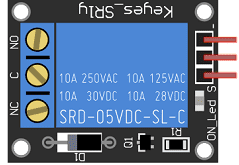
A relay is an electronic switch that can be controlled by an ESP32 microcontroller to turn a water pump on and off. When the relay is energized, it closes an electrical circuit, allowing electricity to flow through the pump and turn it on. When the relay is de-energized, it opens the circuit, cutting off the electricity and turning the pump off.
To use a relay to control a water pump with an ESP32, you will need to connect the relay to the ESP32‘s digital output pins. The relay typically has three pins, VCC, GND, and IN. VCC should be connected to 3.3V of the ESP32, GND to GND, and IN to a digital pin of the ESP32. Once the connections are made, you can use the ESP32‘s digital output pins to control the relay and turn the water pump on and off.
Push Button
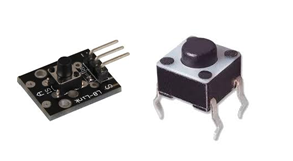
A push button is a type of input device that can be used to provide a convenient way for a user to input data or commands into an ESP32-controlled system. It’s a simple switch that can be activated by pressing it.
To use a push button with an ESP32, you would need to connect the button to the ESP32‘s input pins, and then write code that reads the state of the button and performs an action based on whether it is pressed or not. This code would typically be written using the Micropython programming language and the ESP32‘s libraries. There are many online tutorials and guides available that can help you with this process.
Battery of 9V
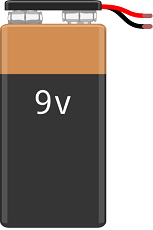
A 9V battery is a type of primary (non-rechargeable) battery that provides a nominal voltage of 9 volts. It is commonly used in portable devices such as smoke detectors, remote controls, and small electronic toys. 9V batteries are also used in some low-power projects such as small robots and simple electronic circuits.
Test plate

A test plate for Arduino is a type of test plate that can be used in conjunction with an Arduino microcontroller to automate experiments or tests. The test plate typically contains multiple wells or compartments that can hold samples or test solutions, and is designed to interface with the Arduino’s digital inputs and outputs.
Connecting wires

Wires in a robotic system are used to connect and transmit electrical signals between different components of the robot. These components can include sensors, actuators, motors, and the microcontroller, such as an Arduino. The wires in a robotic system are typically made of copper and are insulated to prevent electrical interference and short circuits.
The type of wires used in a robotic system depends on the specific application and requirements of the robot. For example, a robot that requires high-current power transmission may use thicker, high-gauge wires, while a robot that requires a high degree of flexibility and movement may use thinner, more flexible wires.
Mounting the ESP32 board with the water pump:
The relay is the intermediate component between the ESP32 board and the water pump. It allows the ESP32 board to control the water pump.
The role of the relay is to start or stop the pump responsible for filling the bottles.
-
We connect the (-) terminal of the relay to the GND pin of the ESP32 board
-
We connect the (+) terminal of the relay to the 3.3V pin of the ESP32 board
-
We connect the terminal (S) of the relay to pin D23 of the ESP32 board
the role of the push button is the activation or deactivation of the relay module.

Micropython program
Here is the micropython program which allows to control the water pump by the ESP32 card.
|
1 2 3 4 5 6 7 8 9 10 |
import machine from machine import Pin button = machine.Pin(21, machine.Pin.IN, machine.Pin.PULL_UP) pompe=Pin(23,Pin.OUT) # set pin D23 of ESP32 to output mode while True: if not button.value(): # We press the button pompe.value(1) # the water pump fills the bottle else: # we release the button pompe.value(0) # the water pump stops |

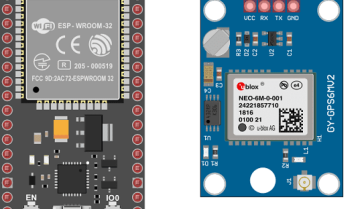
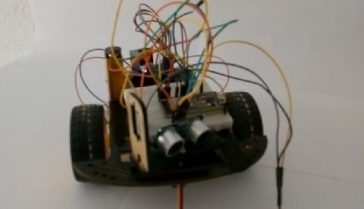

















frp lab exhaust hood 11-12-2323
I'm gone to say to my little brother, that he should also visit this web site on regular basis to get updated from most recent information.